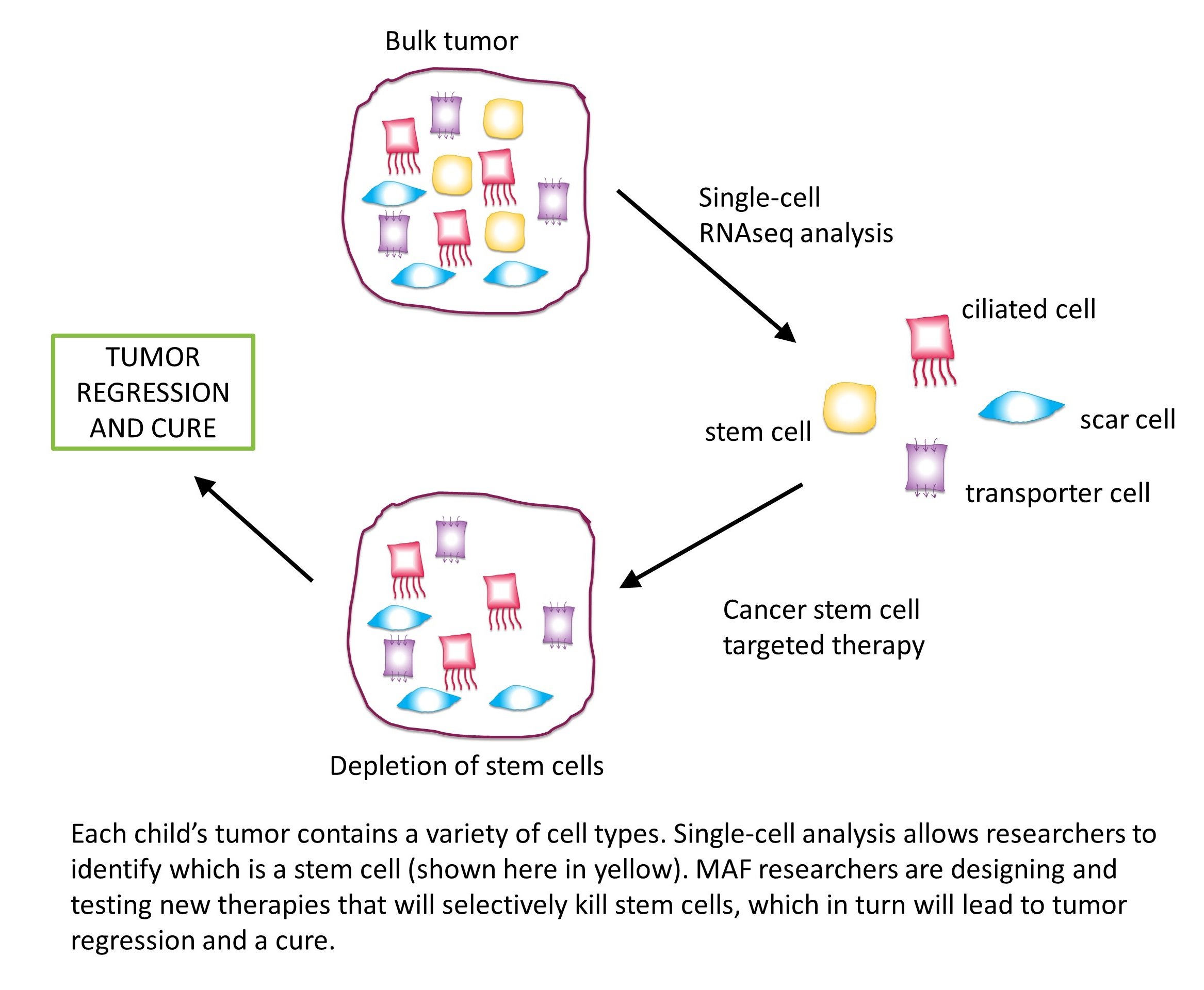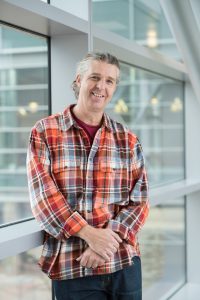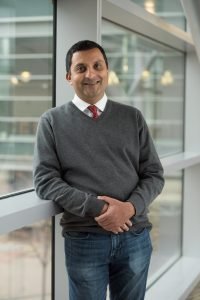Chemotherapy and radiation kill rapidly dividing cells, a hallmark of cancer (and hair). However, cancer stem cells do not divide rapidly and so tend to resist these treatments. And while these stem cells make up only a small percentage of a tumor’s bulk, if only a small population survives treatment, they can often regrow a tumor once treatment ends. Unfortunately, tumors have learned to promote and protect these stem cells – many tumors include genetic changes that keep stem cells “stemmy.” If we knew these genetic changes, we could attack cancer stem cells.
Now thanks to work made possible by you, we have a leading genetic candidate. Researchers at Children’s Hospital Colorado (CHCO), including Rajeev Vibhakar, Andrew Donson, and Sujatha Venkataraman, have identified a gene that may protect stem cells driving the aggressive form of pediatric brain cancer known as ependymoma. The work offers hope for new treatments against the most dangerous subtype of pediatric ependymoma, a disease that remains almost uniformly fatal.
“This is a really cool project and an example of one of those things when everything just seems to come together,” says Vibhakar, MD, PhD, professor of pediatrics at the CU School of Medicine and pediatric brain tumor specialist at CHCO.

What he means is that this kind of study can’t just spring up overnight. It takes years, if not decades, to lay the foundation for the discovery of a new genetic target in cancer and the development of treatments against it. Think of it like the search for a genetic needle in the haystack of the cancer genome. The first thing you need is the haystack, which in this case were brain cancer cells. But you also need the right haystack – not just cancer cells, but cancer stem cells. To explore the genome of ependymoma stem cells, a team led by Andrew Donson used a technique called single-cell RNAseq to look down beneath the layer of overall tumor genetics to see which genes seemed unusually high or low specifically in the cancer stem cells.
What they found is “a switch between cells being able to differentiate or not differentiate,” Donson says. In the case of ependymoma, it seemed as if this switch was keeping cancer stem cells from “differentiating” into regular cancer cells – instead, with this switch stuck in the on position, cancer stem cells were making more cancer stem cells.
“We can clearly see this gene isn’t important in the majority of the tumor, but it’s really super high in that small population of stem cells,” Vibhakar says.
These studies provide the target. And, while additional work is required to define the role of this target in ependymoma, a drug being studied in early clinical trials of other brain cancer types already exists to silence this target, making a trial in ependymoma patients a very real possibility.
“This work wouldn’t have been possible without funding from The Morgan Adams Foundation,” Donson says. “This is what they do – they fund these early, high-risk projects and many turn out to be high-reward as well. Now if we can finalize proof of principle that, yes, this target is important, and indeed it does target cancer stem cells, and yes we can drug it, we can prepare to write a National Institutes of Health grant that lets us translate these findings from the lab to the clinic, where we could benefit patients.”
The Morgan Adams Foundation Pediatric Brain Tumor Research Program
at the University of Colorado Anschutz Medical Campus / Children’s Hospital Colorado




